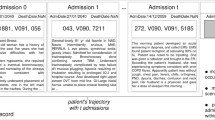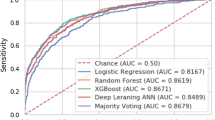Abstract
Managing resource critical facilities like Intensive Care Units (ICUs) is an important task for hospital management officials. Predicting how long a patient is going to stay in ICU is considered an important problem for managers. Several attempts have been made to solve this problem using different types of clinical data that are available from the past. While a number of studies have deployed classification models that use structured clinical variables, recent advances in Natural Language Processing models have opened up the possibilities of using unstructured text data like nursing notes, discharge summaries, etc. for prediction. In this work, we have proposed the use of CNN and LSTM based prediction networks along with transformer-based language models for representing the notes data. The proposed model can predict with a much higher accuracy rate than any other existing model. The dataset used for the experiment is MIMIC, which is an anonymized dataset that contains detailed records of around 40,000 patients most of whom were critically ill. We use the first day’s nursing notes for prediction since that can provide most relevant and valuable input to planning.
Access this chapter
Tax calculation will be finalised at checkout
Purchases are for personal use only
Similar content being viewed by others
References
van Aken, B., Papaioannou, J. M., Mayrdorfer, M., Budde, K., Gers, F. A., & Löser, A. (2021). Clinical outcome prediction from admission notes using self-supervised knowledge integration. arXiv:2102.04110.
Alghatani, K., Ammar, N., Rezgui, A., Shaban-Nejad, A., et al. (2021). Predicting intensive care unit length of stay and mortality using patient vital signs: Machine learning model development and validation. JMIR Medical Informatics, 9(5), e21347.
Alsentzer, E., Murphy, J. R., Boag, W., Weng, W. H., Jin, D., Naumann, T., et al. (2019). Publicly available clinical Bert embeddings. arXiv:1904.03323.
Cohen, J. (1960). A coefficient of agreement for nominal scales. Educational and Psychological Measurement, 20(1), 37–46.
Devlin, J., Chang, M. W., Lee, K., & Toutanova, K. (2018). Bert: Pre-training of deep bidirectional transformers for language understanding. arXiv:1810.04805.
Gentimis, T., Ala’J, A., Durante, A., Cook, K., & Steele, R.: Predicting hospital length of stay using neural networks on mimic iii data. In 2017 IEEE 15th International Conference on Dependable, Autonomic and Secure Computing, 15th International Conference on Pervasive Intelligence and Computing, 3rd International Conference on Big Data Intelligence and Computing and Cyber Science and Technology Congress (DASC/PiCom/DataCom/CyberSciTech). (pp. 1194–1201). IEEE
Harutyunyan, H., Khachatrian, H., Kale, D. C., Ver Steeg, G., & Galstyan, A. (2019). Multitask learning and benchmarking with clinical time series data. Scientific Data, 6(1), 1–18.
Hochreiter, S., & Schmidhuber, J. (1997). Long short-term memory. Neural Computation, 9(8), 1735–1780.
Huang, G., Liu, Z., Van Der Maaten, L., & Weinberger, K. Q. (2017). Densely connected convolutional networks. In Proceedings of the IEEE Conference on Computer Vision and Pattern Recognition (pp. 4700–4708).
Johnson, A. E., Kramer, A. A., & Clifford, G. D. (2013). A new severity of illness scale using a subset of acute physiology and chronic health evaluation data elements shows comparable predictive accuracy. Critical Care Medicine, 41(7), 1711–1718.
Johnson, A. E., Pollard, T. J., Shen, L., Li-Wei, H. L., Feng, M., Ghassemi, M., et al. (2016). Mimic-iii, a freely accessible critical care database. Scientific Data, 3(1), 1–9.
Jones, A. (2015). An explanation of Xavier initialization. Retrieved from Andy’s blog.
Le Gall, J. R., Lemeshow, S., & Saulnier, F. (1993). A new simplified acute physiology score (saps ii) based on a European/North American multicenter study. Jama, 270(24), 2957–2963.
Lee, J., Yoon, W., Kim, S., Kim, D., Kim, S., So, C. H., & Kang, J. (2020). Biobert: A pre-trained biomedical language representation model for biomedical text mining. Bioinformatics, 36(4), 1234–1240.
Peng, Y., Yan, S., & Lu, Z. (2019). Transfer learning in biomedical natural language processing: an evaluation of Bert and Elmo on ten benchmarking datasets. arXiv:1906.05474.
Pollard, T. J., Johnson, A. E., Raffa, J. D., Celi, L. A., Mark, R. G., & Badawi, O. (2018). The Eicu collaborative research database, a freely available multi-center database for critical care research. Scientific Data, 5(1), 1–13.
Rocheteau, E., Liò, P., & Hyland, S. (2020). Predicting length of stay in the intensive care unit with temporal pointwise convolutional networks. arXiv:2006.16109.
Su, L., Xu, Z., Chang, F., Ma, Y., Liu, S., Jiang, H., et al. (2021). Early prediction of mortality, severity, and length of stay in the intensive care unit of sepsis patients based on sepsis 3.0 by machine learning models. Frontiers in Medicine 8, 883.
Vincent, J. L., Moreno, R., Takala, J., Willatts, S., De Mendonça, A., Bruining, H., et al. (1996). The sofa (sepsis-related organ failure assessment) score to describe organ dysfunction/failure.
Wong, D. T., & Knaus, W. A. (1991). Predicting outcome in critical care: The current status of the apache prognostic scoring system. Canadian Journal of Anaesthesia, 38(3), 374–383.
Author information
Authors and Affiliations
Corresponding author
Editor information
Editors and Affiliations
Rights and permissions
Copyright information
© 2023 The Author(s), under exclusive license to Springer Nature Switzerland AG
About this chapter
Cite this chapter
Jana, S., Dasgupta, T., Dey, L. (2023). Using Nursing Notes to Predict Length of Stay in ICU for Critically Ill Patients. In: Shaban-Nejad, A., Michalowski, M., Bianco, S. (eds) Multimodal AI in Healthcare. Studies in Computational Intelligence, vol 1060. Springer, Cham. https://doi.org/10.1007/978-3-031-14771-5_28
Download citation
DOI: https://doi.org/10.1007/978-3-031-14771-5_28
Published:
Publisher Name: Springer, Cham
Print ISBN: 978-3-031-14770-8
Online ISBN: 978-3-031-14771-5
eBook Packages: Intelligent Technologies and RoboticsIntelligent Technologies and Robotics (R0)




